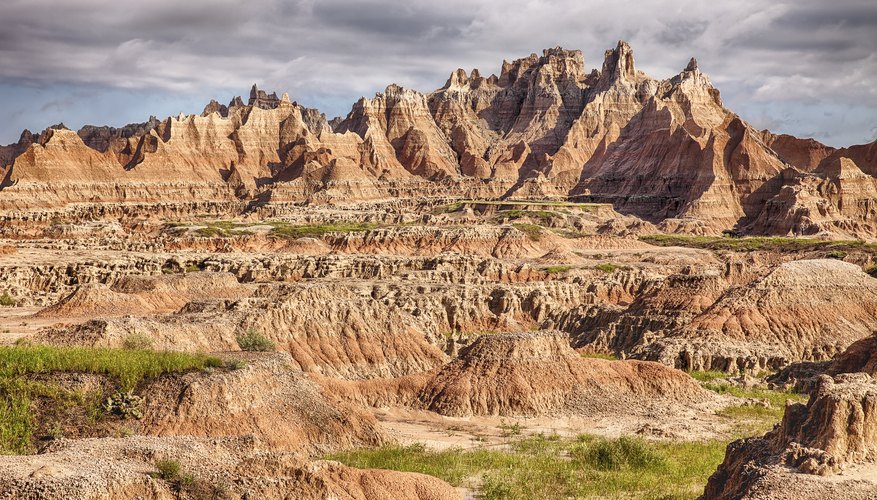How Did the Badlands Get Their Name?
By Meg Jernigan; Updated June 08, 2017Explore the Dakotas: Things you didn't know about the Badlands

Tourist traps around Mount Rushmore and the Crazy Horse Memorial give way to a forbidding landscape where prairie dogs poke their heads out of warrens, coyotes howl and bison roam free. The Badlands, terrain that stymied Native Americans, trappers and the U.S. Army, stretch across the northern Great Plains.
What’s in a name?
Wind and water eroded soft, sedimentary rock into surreal landscapes of ravines, ridges, gullies and pinnacles to create what the Lakota call “Mako Sica,” or "land bad." French-Canadian trappers called it "les mauvais terres pour traverse." This sparsely-populated region of the Great Plains has stretches of soft clay soil layered with harder rock and little vegetation to soften the blow of sudden, heavy rains. The terrain is bleak and difficult to travel through. A visitor standing at the edge may find it hard to determine if he’s looking at a distant mountain range or a nearby cliff.
Where are they?
Badlands in the United States are concentrated in the upper Great Plains, in the areas where North and South Dakota, Montana and Nebraska share borders. Badlands National Park in South Dakota and Theodore Roosevelt National Park in North Dakota enclose the largest areas of Badlands terrain open to the public. Toadstool Geological Park in Nebraska and the Upper Missouri River Breaks National Monument in Montana have notable formations. Badlands surround the Missouri River – one of the major causes of erosion in the area as it meanders through the region – and the Little Missouri River.
Get the most out of your visit
Staying at Badlands National Park in South Dakota might make the best base of operations for exploring the Badlands. A concessionaire operates the Cedar Pass Lodge, the only improved accommodations in the park, and the park’s two campgrounds are open year-round. Packing into the back country leads to 50-mile views and clear night skies. It takes about an hour to drive the Badlands Loop Road, recommended for its views and close encounters with wildlife. Cyclists are welcome on the route and on gravel roads that lead to the interior of the park.
What else?
Theodore Roosevelt National Park hosts fewer visitors than Badlands, but provides the same opportunities to camp, hike and revisit history. Custer, on his march through the area to the Battle of Little Bighorn, wrote, “We found the Little Missouri River so crooked and the Bad Lands so impassable that in marching fifty miles today we forded the river thirty-four times.” Pick up a Custer Trail Auto Tour brochure if you want guidance on your own winding trip through the Badlands.
Keep in mind
National parks are typically open 24/7, year-round. Visitor centers may close on major holidays, or open seasonally. Heed the warnings about the native bison that roam the parks. They’re faster than they look, and they will charge you if provoked. Summers are hot with sudden, violent thunderstorms, and winters see one- to two-feet of snow and occasional sub-zero lows. The best time to photograph the Badlands is as the sun rises and sets. Slanting rays across the formations make for dramatic photos.